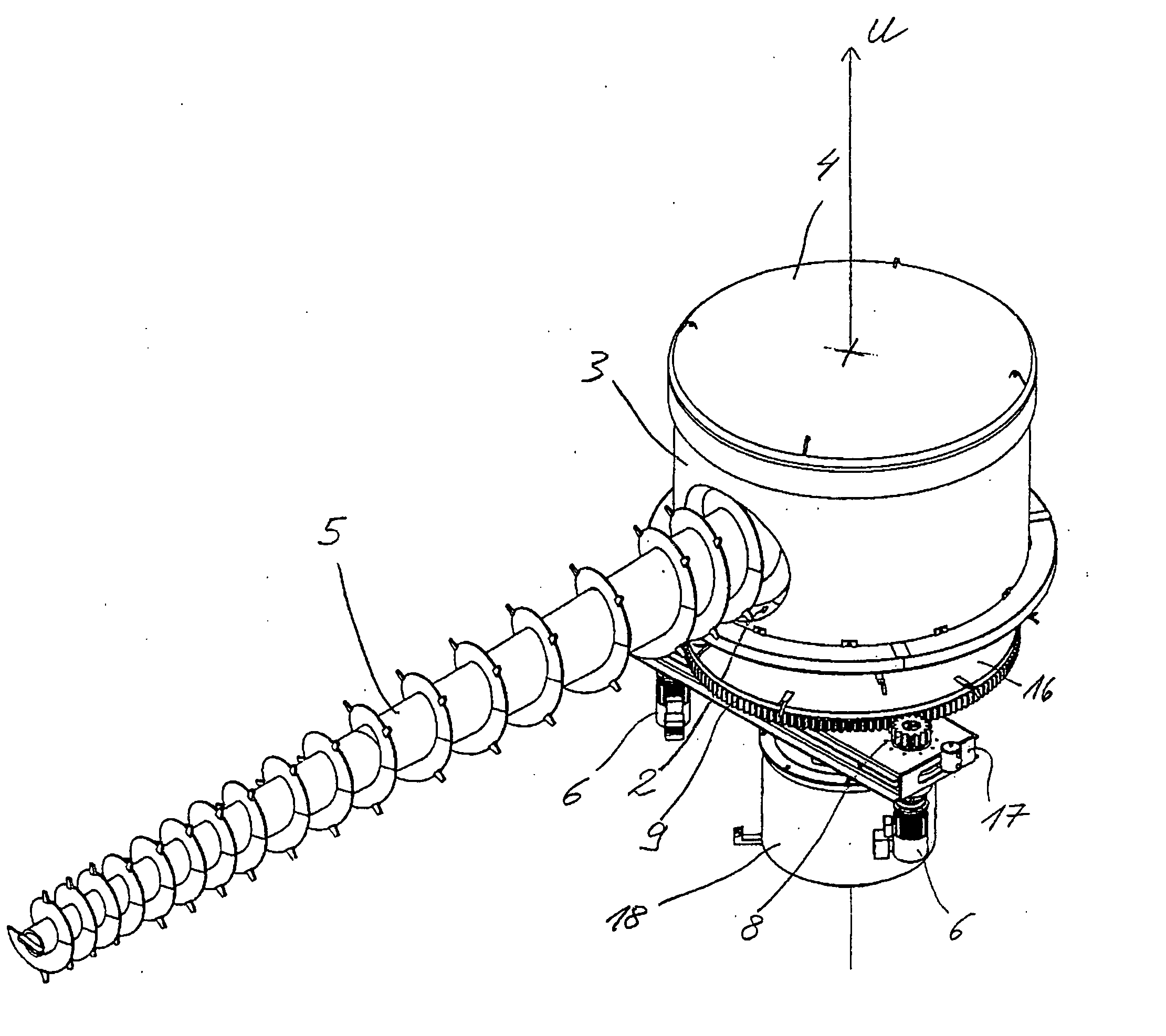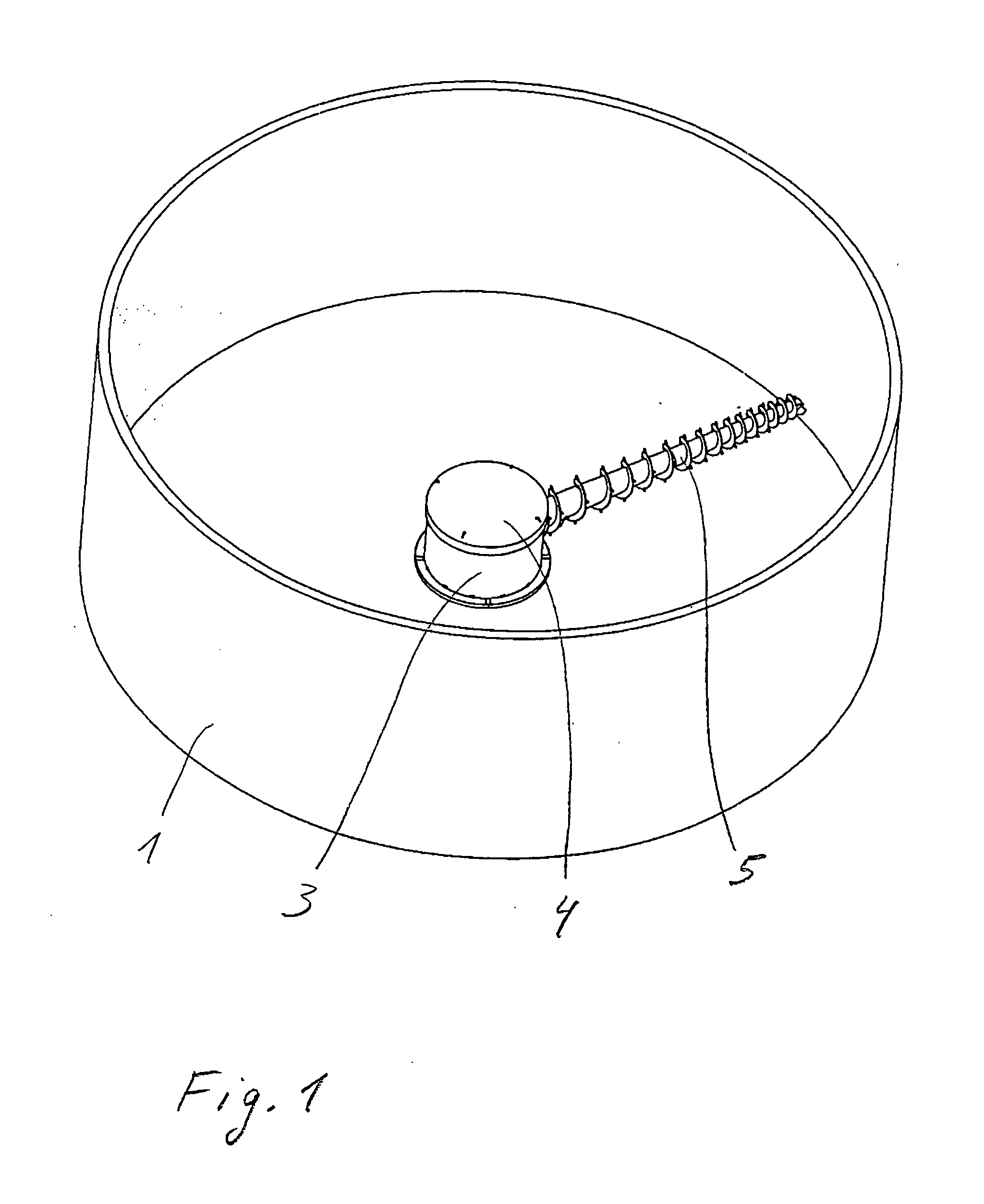Device for conveying bulk material
- Summary
- Abstract
- Description
- Claims
- Application Information
AI Technical Summary
Benefits of technology
Problems solved by technology
Method used
Image
Examples
Embodiment Construction
[0029]FIG. 1 shows a view down into a store for bulk materials. The bulk material store comprises a storage container, which in the embodiment illustrated here is provided in the form of a silo with a circular side wall 1. However, only one circular portion of the side wall 1 is illustrated. On a base of the storage container 1, a device for conveying bulk material is disposed at its centre. The device comprises a conveying unit 5, which in the embodiment illustrated as an example is a conveyer screw 5, as well as a tower formed by a base which is not illustrated in the drawing, a jacket 3 fixedly joined to the base so as to rotate with it and a roof 4 in the form of an at least substantially closed housing. The base is mounted on a frame of the bulk material store so that it can rotate about a vertical rotation axis U. When the tower 3, 4 is rotated, the conveyer screw 5 pivots about the rotation axis U and as it does so wipes the entire base surface of the storage container 1 exte...
PUM
 Login to View More
Login to View More Abstract
Description
Claims
Application Information
 Login to View More
Login to View More - R&D
- Intellectual Property
- Life Sciences
- Materials
- Tech Scout
- Unparalleled Data Quality
- Higher Quality Content
- 60% Fewer Hallucinations
Browse by: Latest US Patents, China's latest patents, Technical Efficacy Thesaurus, Application Domain, Technology Topic, Popular Technical Reports.
© 2025 PatSnap. All rights reserved.Legal|Privacy policy|Modern Slavery Act Transparency Statement|Sitemap|About US| Contact US: help@patsnap.com



